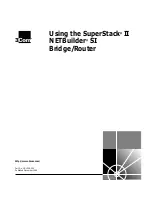
296
Configuring IPv6 PIM
Overview
IPv6 PIM provides IPv6 multicast forwarding by leveraging IPv6 unicast static routes or IPv6 unicast
routing tables generated by any IPv6 unicast routing protocol, such as RIPng, OSPFv3, IS-ISv6, or BGP4+.
IPv6 PIM uses an IPv6 unicast routing table to perform RPF check to implement IPv6 multicast forwarding.
Independent of the IPv6 unicast routing protocols running on the device, IPv6 multicast routing can be
implemented as long as the corresponding IPv6 multicast routing entries are created through IPv6 unicast
routes. IPv6 PIM uses the RPF mechanism to implement IPv6 multicast forwarding. When an IPv6
multicast packet arrives on an interface of the device, RPF check is performed on it. If the RPF check
succeeds, the device creates the corresponding routing entry and forwards the packet. If the RPF check
fails, the device discards the packet. For more information about RPF, see "Configuring IPv6 multicast
routing and forwarding."
Based on the implementation mechanism, IPv6 PIM supports the following modes:
•
IPv6 Protocol Independent Multicast–Dense Mode (IPv6 PIM-DM)
•
IPv6 Protocol Independent Multicast–Sparse Mode (IPv6 PIM-SM)
•
IPv6 Bidirectional Protocol Independent Multicast (IPv6 BIDIR-PIM)
•
IPv6 Protocol Independent Multicast Source-Specific Multicast (IPv6 PIM-SSM)
In this document, a network comprising IPv6 PIM routers is referred to as an "IPv6 PIM domain."
IPv6 PIM-DM overview
IPv6 PIM-DM is a type of dense mode IPv6 multicast protocol. It uses the push mode for IPv6 multicast
forwarding, and is suitable for small-sized networks with densely distributed IPv6 multicast members.
The following describes the basic implementation of IPv6 PIM-DM:
•
IPv6 PIM-DM assumes that at least one IPv6 multicast group member exists on each subnet of a
network. Therefore IPv6 multicast data is flooded to all nodes on the network. Then, branches
without IPv6 multicast forwarding are pruned from the forwarding tree, leaving only those branches
that contain receivers. This flood-and-prune process takes place periodically. Pruned branches
resume IPv6 multicast forwarding when the pruned state times out. Data is flooded again down
these branches, and then the branches are pruned again.
•
When a new receiver on a previously pruned branch joins an IPv6 multicast group, to reduce the
join latency, IPv6 PIM-DM uses the graft mechanism to resume IPv6 multicast data forwarding to
that branch.
In general, the IPv6 multicast forwarding path is a source tree. That is, it is a forwarding tree with the IPv6
multicast source as its "root" and IPv6 multicast group members as its "leaves." Because the source tree
is the shortest path from the IPv6 multicast source to the receivers, it is also called SPT.
The operating mechanism of IPv6 PIM-DM is summarized as follows:
•
Neighbor discovery
•
SPT establishment
•
Graft
















































